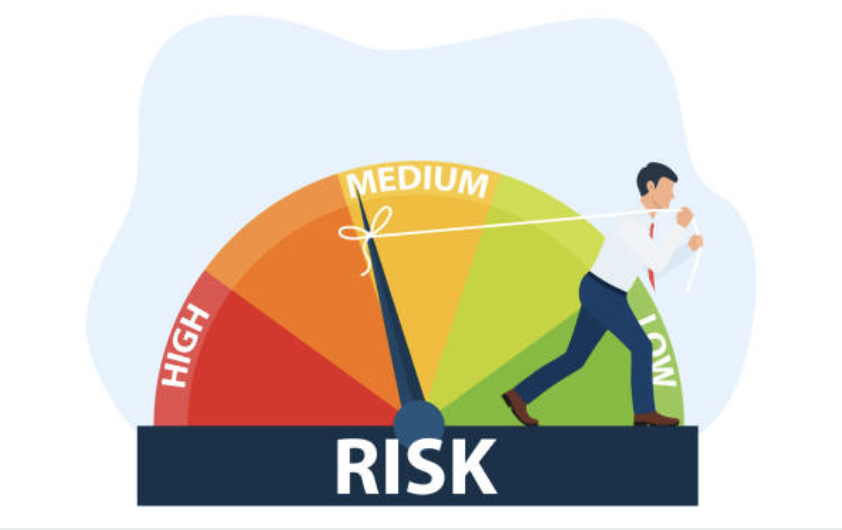
Drake Hampton
Mar 28, 2022 17:42
If you're new to investing or want to improve your skills, it's critical to understand the differences between various types of investments and what they can do for your portfolio. Because the more you know about investing, the better-informed your investment selections will be, you should begin by learning the fundamentals and clearing up any uncertainty you may have when questions occur.
Sorting out the differences between dividend and growth investments and deciding which to choose is a common source of difficulty for new and aspiring investors.
You could wish to examine mutual funds that are focused on either a growth or dividend strategy instead of buying individual stocks, but you'll need to first understand the fundamental features of each form of investment.
The excess return on dividend investments is declared and shared with investors, whereas the profit surplus is withdrawn as dividends. The excess return in a growth model investment is reinvested in the company, and profits are only realized when the stock is redeemed or sold.
Each sort of investment has its own set of benefits and drawbacks, which are determined by the investor's personal objectives, financial situation, and investment horizon. We'll look at Dividend Vs Growth Stocks and see which is superior in this article.

Growth investment is concerned with the price of a stock increasing in value. As a growth investor, you will only buy a company if you believe it will dramatically improve in value over time. This purchase could be motivated by, among other things, a company's comparatively "cheap" stock price, its financials, market trends, and/or competitive advantage(s).
Growth investors and their techniques differ, with some keeping a stock for a short period of time (1-2 years or less) and others buying and holding a business for 20 years or more. These investors are primarily looking for substantial capital gains and are unconcerned with dividend payments.
You'll be more exposed to unrealized gains or losses if you invest in growth stocks. Let's imagine you put $1,000 into a stock and it rose to $5,000 over the course of five years. Unfortunately, a market crash occurs the day before you plan to sell your shares, and your $5,000 becomes $3,500 in just one day. Your initial "unrealized gains" were $4,000 ($5,000 - $1,000) because you invested $1,000 in the stock and it had previously grown to $5,000. However, after the market drop, your unrealized gains would be only $2,500 ($3,500 - $1,000).
Obviously, you don't get the benefits of the stock market until you sell your shares and earn money from the stock you invested in. As a growth investor, you should be mindful of this at all times.
The primary reason for a firm's failure to pay a dividend is that it is simply not practicable for the company to do so due to its financial status or present market situation. The second argument is that businesses believe they have enough opportunity for future growth and do not want to pay dividends because it will limit their growth potential. To put it another way, most growth stocks do not pay dividends since they are younger and have more capacity for growth than older companies, which are more inclined to do so.
Investors buy dividend stocks largely for the purpose of generating income or a steady and growing cash flow stream. As a result, dividend investors get money regardless of whether a stock rises or falls in value. This is certainly not the case for growth investors, who are more concerned with capital appreciation than cash flow.
Dividend stocks are often older and devote a lot of their attention to their current operations. This isn't to say that dividend stocks aren't increasing in value (as the dividend growth investment strategy requires). What this truly means is that dividend-paying corporations are large enough to be able to pay a percentage of their profits to their stockholders.
However, investors should seek safety by carefully examining the payout ratio and looking for companies with sufficient cash flow and income to easily fund dividend payouts.
Focusing on a high dividend yield, which generates large cash flow income now, or a high dividend growth rate, which generates lower-than-average dividends now with the expectation of rapid company growth during a rapid expansion period and per-share dividend growth over the next five to ten years, is a good strategy.
Dividend investment is often advised for investors with a shorter time horizon who want more liquidity.
Investing in growth stocks necessitates careful selection based on a number of factors. The answer to making money is to build a decent stock portfolio and stay involved for a long time, say 5 to 7 years. Some of the indicators that might be utilized to pick stocks include:
EPS is one of the most important pieces of equity data for investors. It stands for the net profit earned by the corporation on each share. EPS has a direct impact on the market price of equity shares. It's computed by multiplying the profit after taxes by the total number of outstanding shares. EPS = Profit after tax (PAT) / number of outstanding shares
If the company's profit after tax (PAT) is Rs.10 crore and the number of outstanding shares is 2 crore, then It signifies that the corporation earns Rs.5 (10/2) for each share. No other indicator, in my opinion, has a greater direct impact on stock price than EPS. Any changes in earnings per share (EPS) are immediately reflected in the stock market price. The EPS and share price have been found to have a close association. A rise in the stock price is usually accompanied by an increase in EPS. A drop in EPS, on the other hand, results in a drop in stock prices. As a result, EPS has become the most closely monitored financial metric among corporations.
The P/E ratio illustrates how much a share may be sold for in the market compared to its earnings per share (EPS). You can find out whether investors think the stock is as valuable as its results suggest. It is determined by dividing the stock's market price by its earnings per share (EPS). P/E is the market price of a stock divided by the earnings per share.
If P/E is believed to remain constant, a continual growth in EPS will raise the market price, indicating higher demand for the particular share. As EPS declines, the market price begins to decline as well. As a result, growth stocks attempt to keep their P/E ratios low in order to keep the market price high.
Growth stocks work hard to maintain their sales momentum. The amount of revenue generated is critical in driving the company's overall growth. An rise in sales leads to an improvement in the company's profitability. A constant increase in profitability serves to boost earnings per share (EPS), which raises the stock market price. In the long run, a greater market price is beneficial to shareholders' wealth.
The profitability of a corporation has a significant impact on its EPS. Raising profitability, on the other hand, is not as straightforward as increasing sales. However, there is one way to satisfy stockholders. A continuous increase in sales growth would result in a faster increase in EPS. This would raise the market price, resulting in increased shareholder wealth.
Dividend stocks are often held by established corporations that have a history of paying consistent dividends. This occurs when the company is enduring a period of unpleasant events. These stocks have a low price-to-earnings ratio and high dividend yields. During market downturns or when the market is in its early phases of recovery, these stocks tend to do well.
Value equities appear to be riskier than growth stocks due to the market's skepticism. To become a profitable proposition, the entire market's opinion of the company must alter. Value stocks are more likely to be profitable in the long run than growth stocks due to a larger underlying risk. The true danger arises when the prospect of a value stock regaining its low status never materializes. As a result, while investing in value companies, your investment horizon is critical.
Because the financial investment is reimbursed in dividends by the stock or mutual fund houses, dividend stocks are more common in the market. Growth stocks, on the other hand, are those in which money is invested rather than withdrawn at regular intervals.
In growth, the extra return gained on the stock is re-invested with the stock, whereas in dividends, investors receive regular returns at regular intervals.
Profits from growth investments can only be realized when they are sold or redeemed, whereas excess profits from dividend equities can be withdrawn as dividends.
Dividends stock is more closely linked to companies with consistent cash flows and no big capital expenditures planned in the near future. Growth stocks, on the other hand, have the growth to expand because the companies' future predictions and considerable capital expenditure will provide them with a return over a longer period of time.
Dividend investing is a good option for investors who want liquidity and cash at regular intervals. If, on the other hand, an investor seeks growth and intends to hold his investment for a long time, he should invest in growth mutual fund stocks.
Choosing between dividend and growth funds is a personal decision based on the investor's time horizon, risk tolerance, and desired return.
If any of the following apply to you, growth stocks are more likely to appeal to you:
You're not interested in your portfolio's present income. The majority of fast-growing corporations do not pay big dividends to their owners. This is because they choose to reinvest all available cash back into their firm in order to promote faster growth.
You're at ease with large stock price swings. A growth stock's price is very sensitive to changes in a company's business prospects in the future. Growth stocks can skyrocket in value when things go better than expected. Higher-priced growth stocks might tumble down to Earth just as swiftly if they disappoint.
You're confident in your ability to predict winners in emerging markets. Growth stocks are frequently found in fast-moving sectors of the economy, such as technology. Many various growth companies fight against each other on a regular basis. You'll need to identify as many future winners as possible in a certain industry while avoiding losers.
You'll have plenty of time to get your money back before you need it. Growth stocks can take a long time to reach their full potential, and they frequently experience setbacks. It's vital to have a long enough time horizon to allow the business to flourish.
If you look for these features in value stocks, they may appear more appealing:
You're looking for a steady stream of income from your investment portfolio. Many value stocks pay out large amounts of money in dividends to their stockholders. Because such organizations lack considerable growth potential, they must find other ways to keep their stock appealing. One strategy to entice investors to look at a stock is to pay out attractive dividend payouts.
You want stock prices that are more consistent. Value stocks aren't known for having huge price swings in either way. Stock price volatility is usually modest as long as their business circumstances remain within predictable parameters.
You're certain you'll be able to avoid value traps. Stocks that appear to be bargains are frequently value traps or bargains for a cause. It's possible that a business has lost its competitive advantage or is unable to keep up with the pace of innovation. To see whether a company's future business prospects are weak, you'll need to be able to look past its enticing values.
You desire a faster return on your investment. Value investments aren't going to make you rich overnight. A company's stock price might fast grow if it is successful in getting its business moving in the correct way. The finest value investors spot stocks that are undervalued and buy shares before others do.
Finally, there is no obvious victor between growth and value equities in terms of overall long-term performance. When the economy is doing well, growth equities outperform value stocks by a small margin. Value stocks tend to hold up better in adverse economic times. As a result, which group outperforms is highly dependent on the time period in question.
The most common misunderstanding about dividend stocks is that a high yield is necessarily a positive thing. Many dividend investors just select a portfolio of stocks with the highest dividend yields and hope for the best. This is not always a smart choice for a variety of reasons.
Remember that a dividend is a percentage of a company's profits that it pays out in cash to its owners (shareholders), also known as the payout ratio. A dividend payment is not re-invested in the company. 1 If a company pays too much of its profits to its shareholders, it could be a hint that management prefers not to reinvest in the company due to the lack of upside. As a result, the dividend payout ratio, which measures the percentage of profits a company pays out to shareholders, is an important metric to monitor since it indicates whether or not a dividend payer has the ability to reinvest and develop its business.
Most of us think of utility companies and other slow-growth enterprises when we think of high dividend payers. Because investors are so focused on the highest paying equities, these companies spring to mind first. Dividend stocks can become considerably more intriguing if the importance of yield is reduced.
The announcement of a new dividend, high dividend growth metrics in prior years, or the possibility to commit more and raise the dividend are some of the best characteristics a dividend stock can have (even if the current yield is low). Any of these announcements could be a huge deal, causing the stock price to skyrocket and resulting in a higher overall return. Sure, predicting management's dividends and whether a dividend stock will rise in the future is difficult, but there are a few factors that can help.
Financial flexibility: If a stock's dividend payout ratio is low but it generates a lot of free cash flow, it's clear that it has room to raise its dividend. Low capital expenditures and debt levels are also advantageous. On the other hand, if a corporation needs to borrow money to keep its dividend, it is not a good indicator.
Organic growth: Earnings growth is one measure, but cash flow and revenues should also be monitored. It may only be a matter of time before a company's dividend is increased if it is growing organically (i.e. more foot traffic, sales, and margins). A dividend, on the other hand, may be less assured if a company's growth is based on high-risk investments or worldwide expansion.
Dividend stocks are regarded as safe and dependable investments. Many of them are high-value businesses. Dividend aristocrats—companies that have increased their dividend every year for the past 25 years—are frequently seen as safe investments. When you look at the S&P 100, a ranking of the largest and most well-known firms in the United States, you'll see that there are a lot of safe and increasing dividend payers.
However, just because a corporation pays out dividends doesn't mean it's a safe investment. When the stock isn't moving, management can utilize the dividend to appease irritated investors. (In fact, several businesses have been accused of doing so.) To avoid dividend traps, it's always vital to think about how management uses the dividend as part of its overall company strategy. Dividends paid to investors as compensation for a lack of growth are almost always a bad idea. Due to stock price drops in 2008, many stocks' dividend yields were artificially pushed up. Those dividend yields appeared appealing for a time. However, as the financial crisis worsened and profitability plummeted, several dividend schemes were eliminated completely. A unexpected reduction in a dividend program can send stock prices plunging, as many bank equities did in 2008.
Finally, for investors of all ages, dividing investments and growth investing are realistic options. According to your own financial position, you should determine which investment plan you wish to emphasize (that is, allocate the most funds to). It's possible that the best solution is to ignore both and simply invest in an index fund. Again, it all depends on your financial circumstances, your investment horizon, and your investment objectives!

Mar 28, 2022 17:30

Mar 29, 2022 16:43